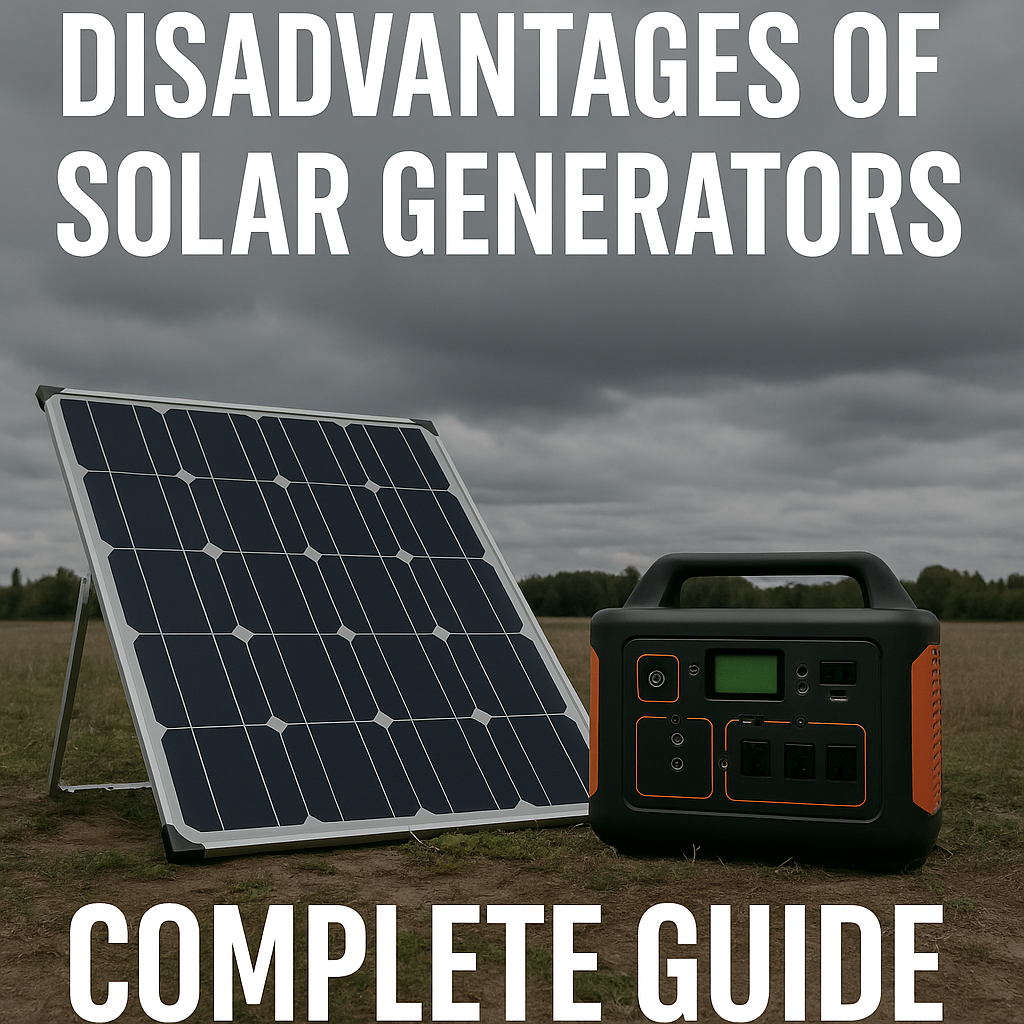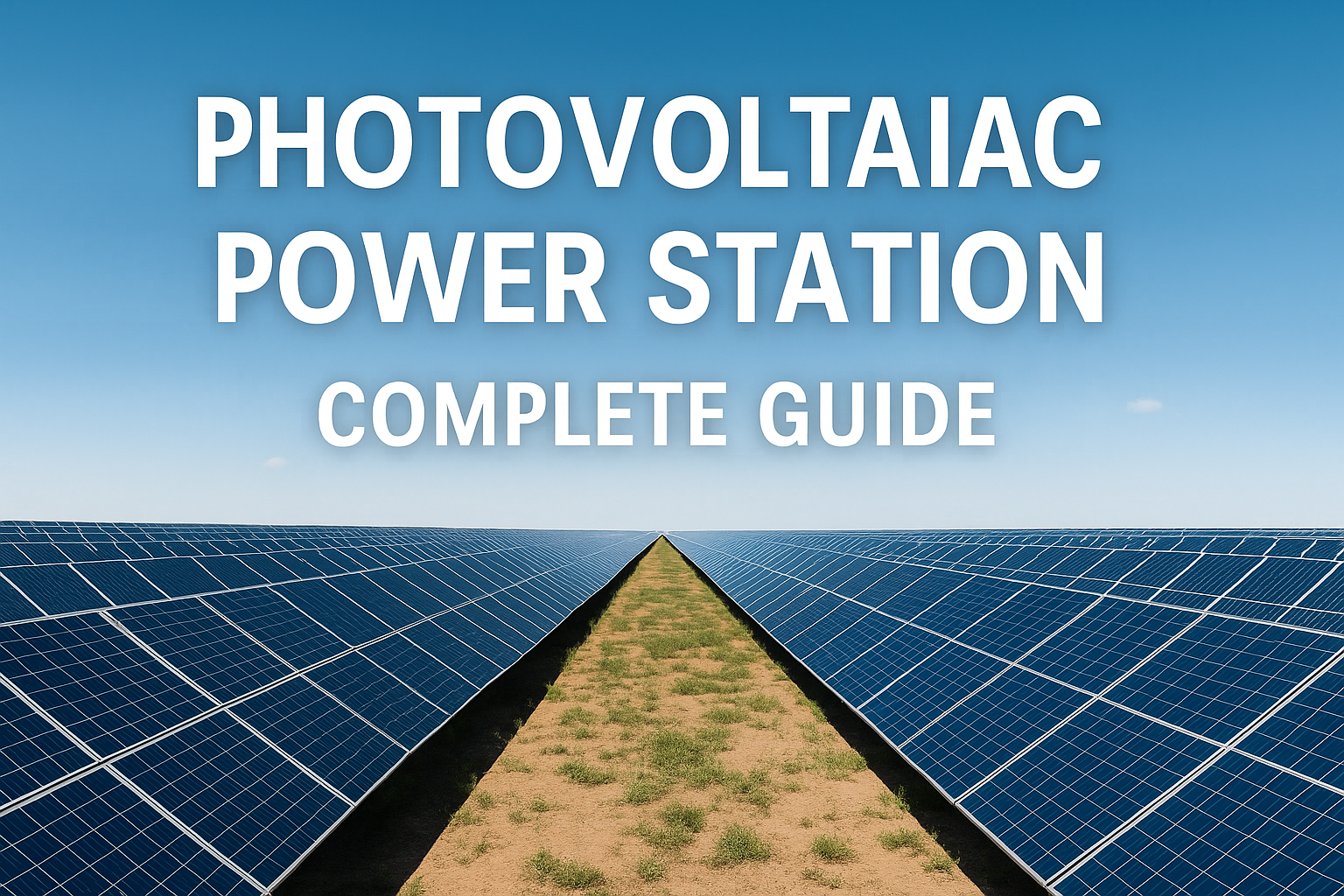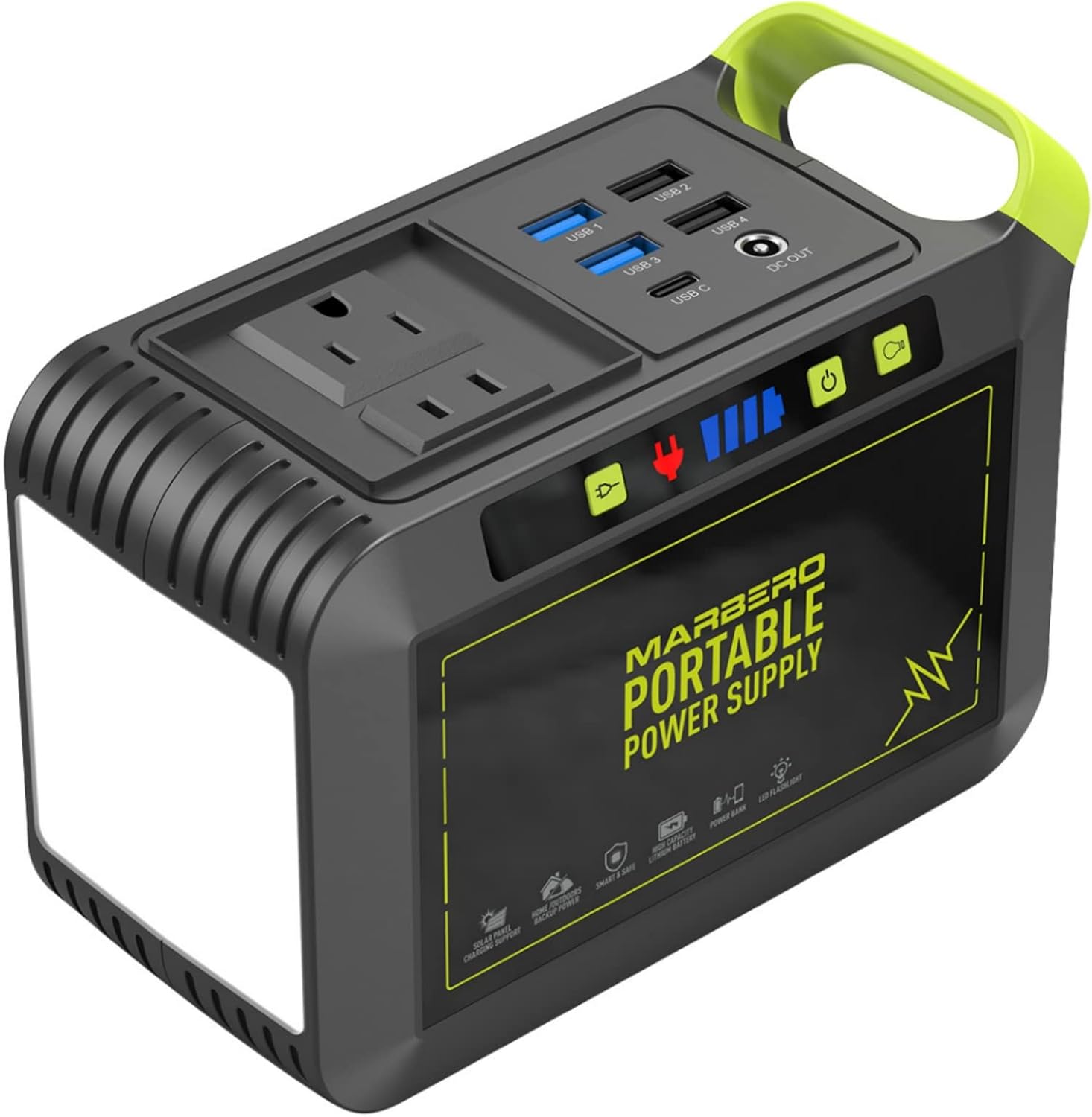Introduction
Solar generators have become one of the most talked-about energy solutions in recent years. They promise clean, renewable power, silent operation, and freedom from gas, fumes, and constant maintenance. From campers and RV travelers to homeowners preparing for power outages, solar generators are marketed as the future of portable and backup energy.
But here’s the truth: solar generators are not perfect. They come with limitations that often get overlooked in marketing materials. Understanding these drawbacks is essential if you’re considering investing hundreds or even thousands of dollars into one.
In this article, we’ll dive deep into the disadvantages of solar generators. By the end, you’ll know their weaknesses, where they fall short compared to gas generators, and how to decide if one is right for your needs.
1. High Upfront Cost
One of the most common complaints about solar generators is the initial purchase price.
- A small unit (300–500Wh) costs around $250–$600.
- Mid-sized units (1,000–2,000Wh) range between $800–$2,000.
- Large backup systems (3,000Wh+) can easily cost $2,500–$5,000 or more, especially if you add solar panels and extra batteries.
In contrast, a gas generator with similar output may cost less than half the price.
While solar generators save money over time by eliminating fuel costs, the steep upfront price makes them less accessible for many households. For some buyers, that cost barrier is the biggest disadvantage.
2. Limited Power Output
Solar generators are designed mainly for light-to-medium energy use, not powering entire homes or heavy-duty equipment.
- Small units can handle phones, laptops, lights, and routers.
- Mid-range models can run a small refrigerator, TV, or CPAP machine.
- Large solar generators may handle microwaves or portable AC units, but usually not central air conditioners, electric stoves, or washing machines.
This limited power capacity is one of the main reasons people combine solar generators with other backup systems. If you expect your generator to handle whole-house electricity like a traditional fuel generator, you may be disappointed.
3. Slower Recharge Times
Recharging is another major drawback. Even with ideal sunlight, a solar generator can take 4 to 12 hours to recharge fully.
Factors that affect recharge speed include:
- Size of the battery (larger batteries take longer).
- Solar panel wattage (a 100W panel charges much slower than a 500W array).
- Weather conditions (clouds or shade reduce efficiency).
Some units allow wall charging (AC) or car charging (DC) to speed things up, but compared to gas generators—where refueling takes just minutes—solar recharge is undeniably slower.
4. Dependence on Sunlight
Solar generators depend on sunlight for recharging. This presents obvious challenges:
- Cloudy days or rainy weather reduce efficiency.
- Short daylight hours in winter limit charging opportunities.
- Nighttime use means you rely solely on stored energy, with no way to recharge until morning.
While many units can charge from a wall outlet, this defeats the purpose of true off-grid independence. For anyone relying solely on solar, the unpredictability of sunlight is a significant limitation.
5. Battery Degradation Over Time
Even the best lithium-ion or LiFePO4 batteries eventually degrade. Most solar generator batteries last 2,000 to 3,000 charge cycles before their capacity drops to about 80%.
For a daily user, that translates to 8–10 years of lifespan. After that, the battery may need replacement—an expensive process, since replacement packs can cost hundreds to thousands of dollars.
This long-term degradation is less of a problem for occasional users but a serious factor for those planning daily off-grid living.
6. Limited Expandability
Not all solar generators allow expansion.
- Entry-level models often have fixed battery sizes, meaning you can’t add more storage when your needs grow.
- Some brands restrict you to proprietary add-on batteries, limiting compatibility and increasing costs.
- Unlike full solar-plus-storage systems (like Tesla Powerwall or home solar batteries), most small solar generators are designed as standalone units, not part of a scalable grid.
If your energy needs expand beyond the generator’s capacity, you may need to buy an entirely new unit rather than upgrading.
7. Weight and Portability Issues
While small units are lightweight and portable, larger solar generators can be heavy and cumbersome.
- Small generators weigh around 10–20 lbs.
- Mid-range systems can weigh 30–60 lbs.
- Heavy-duty backup systems may exceed 100 lbs, making them difficult to move without a cart.
This means portability—one of the key selling points of solar generators—is limited for larger units.
8. Not Ideal for Continuous Heavy Use
Solar generators are great for emergency use, camping, or short-term outages. But they aren’t the best solution for continuous heavy use.
- Running appliances like microwaves, heaters, or pumps drains the battery quickly.
- Without sufficient sunlight, you may run out of power faster than you can recharge.
- For long-term use, hybrid systems (solar + wind + grid or gas backup) are more practical.
9. Weather and Location Limitations
Solar generators perform best in sunny climates. For people in areas with frequent cloud cover or long winters, they may not provide reliable year-round power.
For example:
- A family in Arizona could easily recharge a generator daily.
- A family in northern Europe might struggle with weeks of limited sunlight.
This regional dependency is a disadvantage that doesn’t apply to gas generators.
10. Higher Cost Per Watt
When comparing cost per watt, solar generators are less efficient financially than other backup systems. For example:
- A $1,000 solar generator with 1,000Wh capacity equals $1 per Wh.
- A $500 gas generator producing 5,000W of power provides far more wattage for less upfront cost.
Although solar wins in long-term savings (no fuel), the cost-per-watt ratio makes them less appealing for heavy power users.
Solar Generators vs Gas Generators: A Quick Comparison
Here’s a side-by-side view of the pros and cons:
| Feature | Solar Generator | Gas Generator |
|---|---|---|
| Fuel Source | Sunlight (free) | Gasoline/Diesel (paid) |
| Emissions | None | High (CO₂, fumes) |
| Noise | Silent | Loud |
| Indoor Use | Safe | Unsafe |
| Maintenance | Minimal | Regular (oil, filters) |
| Running Time | Limited by battery | Unlimited with fuel |
| Upfront Cost | Higher | Lower |
| Long-Term Cost | Low | High (fuel + upkeep) |
Verdict:
- Solar wins for clean, quiet, safe, and low-maintenance power.
- Gas wins for high wattage, continuous runtime, and lower initial cost.
Who Should Avoid Solar Generators?
Solar generators may not be the best option if:
- You need to run high-wattage appliances regularly.
- You live in an area with long winters or poor sunlight.
- You want instant recharge rather than waiting hours.
- You’re on a tight budget and need low upfront cost.
How to Overcome Some Disadvantages
While these drawbacks are real, some can be minimized:
- Invest in extra solar panels → speeds up charging.
- Buy expandable units → future-proofs your system.
- Pair with wall charging → ensures backup during cloudy weeks.
- Use energy-efficient appliances → makes the most of limited capacity.
By planning carefully, you can reduce many of the limitations that make solar generators challenging.
Conclusion
Solar generators are an exciting and practical clean-energy solution, but they’re not without flaws. The high upfront cost, limited power output, slower recharge times, battery degradation, and reliance on sunlight are the biggest disadvantages.
That said, for many people—campers, RV owners, homeowners needing light backup power—the benefits outweigh the drawbacks. Solar generators remain an excellent choice for eco-friendly, silent, and safe backup energy.




